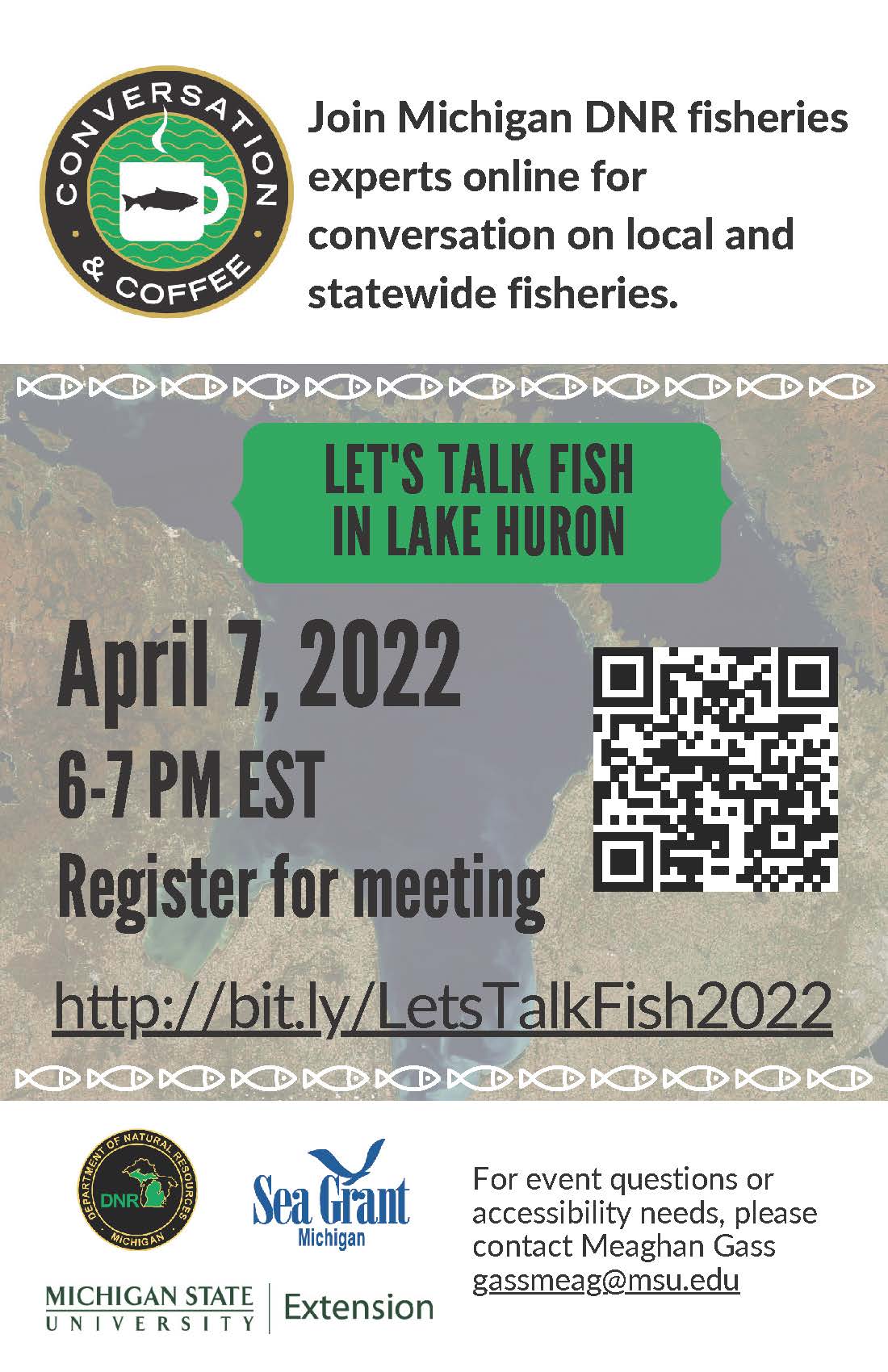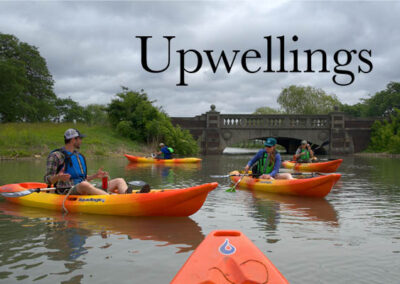
DNR’s Fisheries Division hosts Conversations & Coffee to give anglers an opportunity to meet with managers and biologists, to discuss local issues and management activities, and to get specific questions answered.
By Meaghan Gass and Brandon Schroeder
Are you interested in local and statewide fisheries management activities in Saginaw Bay and want to discuss them with Michigan Department of Natural Resources (MDNR), Fisheries Division staff? Then check out these upcoming opportunities to chat with and learn from fisheries experts.
Fishing rules and regulations are updated annually based on information collected in the previous year. The Michigan Fishing Guide (2021-22 version) is published each year and the rules apply from April 1 – March 31 (in the following year). Here are the upcoming regulations for 2022-23. For regulation updates and to view the latest version of the MI Fishing Guide, visit www.michigan.gov/DNRDigests. Click on the current MI Fishing Guide to open it as a PDF file and save it to your device.
In the 2023-24 fishing season, MDNR plans to open the Saginaw River for walleye fishing and harvest during the current closure in March and April beginning in 2023. Fishing from Saginaw Bay to the Center Street Bridge (also known as the Douglas G. Schenk Bridge) in Saginaw would follow the same regulations as fishing on the open water in Saginaw Bay. This opening will provide even more access to harvest some Saginaw Bay walleye without the need of a boat to travel out to the big water of the bay.
Discuss regulation changes
On April 7, 2022, from 6-7 p.m. EST, Michigan State University Extension and Michigan Sea Grant, and the MDNR are hosting a virtual Conversations & Coffee meeting. In a Zoom Meeting format, attendees can ask DNR staff questions related to fishing regulations and the state’s fisheries. DNR staff will also share 2022-2023 information about local and statewide regulation changes impacting anglers in Saginaw Bay, Lake Huron.
“This is a great opportunity to get input from Michigan anglers on new and proposed fishing regulations,” said Randy Claramunt, MDNR Fisheries Division’s Lake Huron Basin Coordinator.

DNR’s Fisheries Division hosts Conversations & Coffee to give anglers an opportunity to meet with managers and biologists, to discuss local issues and management activities, and to get specific questions answered.
Attendees can register for this free event online https://bit.ly/LetsTalkFish2022 through April 7.
“Stakeholder involvement in fisheries management decision-making is the new normal. We rely on anglers and interested citizens to help us enact management that benefits the fish and that benefits the citizens who use and care about them,” said Southern Lake Huron Fisheries Unit Manager Jeff Jolley.
The webinar will be recorded, and all registrants will receive a link to the recording. However, attending the live webinar is encouraged to have questions answered directly by experts. Please contact Randy Claramunt, MI DNR ([email protected]) or Meaghan Gass, MI Sea Grant ([email protected]) with any questions or concerns related to the Lake Huron Virtual Conversations and Coffee.
Learn more about Lake Huron fisheries
In addition to the Conversations & Coffee meeting, Michigan Sea Grant and Michigan State University Extension, in partnership with the Department of Natural Resources Fisheries Division, USGS Great Lakes Science Center, and local fishery organizations annually offer evening regional workshops to provide valuable information for anglers, charter captains, resource professionals, and interested community members. In 2022, all workshops will be virtual, and three of the workshops will focus on Lake Huron fisheries.
- Lake Huron: Saginaw Bay April 12, 2022, 6-8 p.m. | Registration
- Lake Huron: Les Cheneaux and St. Marys River April 19, 2022, 6-8 p.m. | Registration
- Lake Huron: Offshore April 28, 2022, 6-8 p.m. | Registration
The Saginaw Bay Fisheries Workshop will include information and status updates on topics such as the Lake Sturgeon restoration effort, water quality (nutrient impairment), status of Saginaw Bay Yellow Perch and Walleye and community-engaged management efforts, as well as updates on fisheries management activities and a variety of other Lake Huron topics of local interest.
Michigan Sea Grant helps to foster economic growth and protect Michigan’s coastal, Great Lakes resources through education, research and outreach. A collaborative effort of the University of Michigan and Michigan State University and its MSU Extension, Michigan Sea Grant is part of the NOAA-National Sea Grant network of 34 university-based programs.
This article was prepared in part by Michigan Sea Grant educators under award NA180AR4170102 from the National Oceanic and Atmospheric Administration, U.S. Department of Commerce through the Regents of the University of Michigan. The statement, findings, conclusions, and recommendations are those of the author(s) and do not necessarily reflect the views of the National Oceanic and Atmospheric Administration, the Department of Commerce, or the Regents of the University of Michigan.


